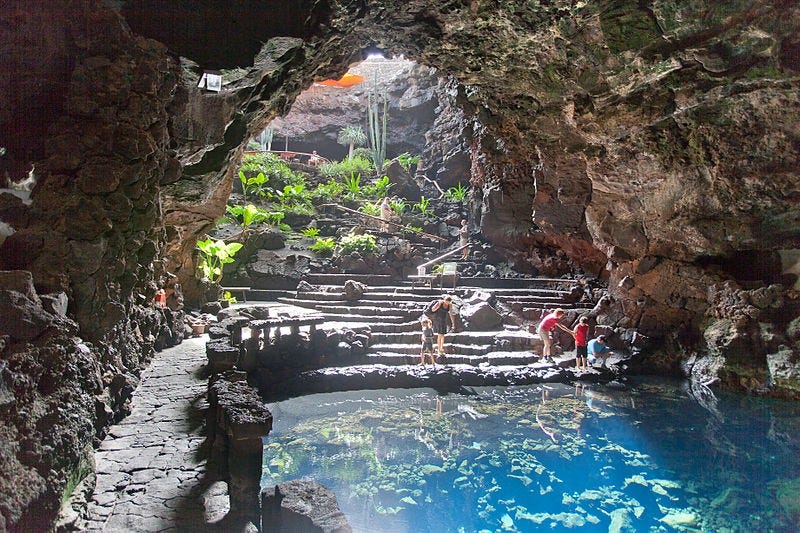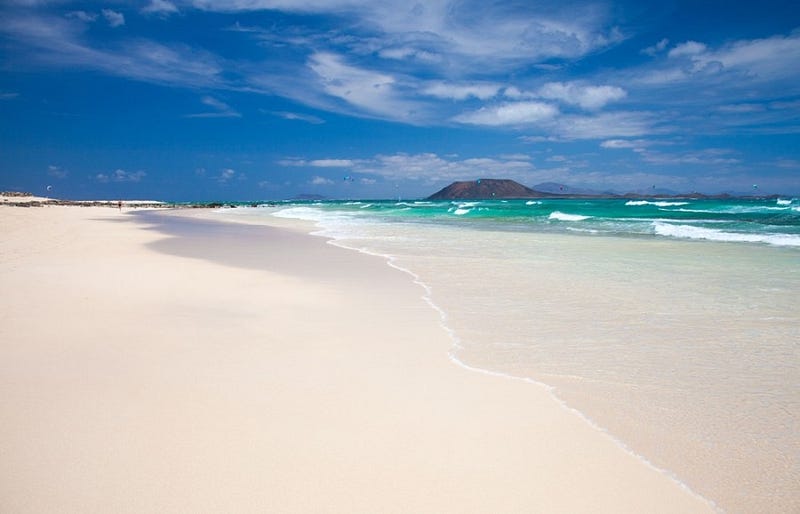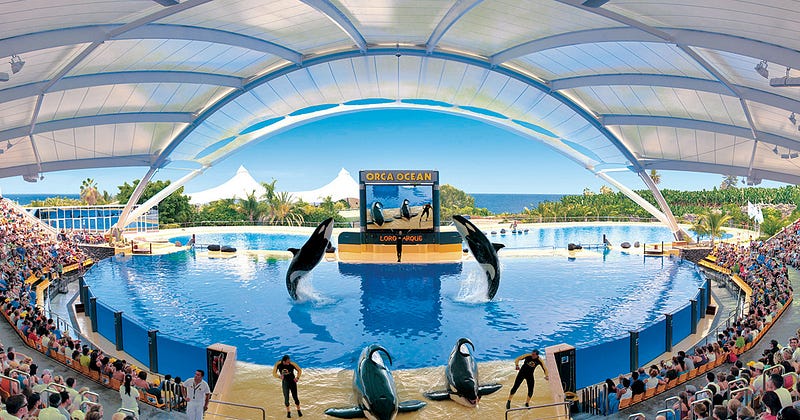XcelTrip-8 Breath-taking Places To Visit In The Canary Islands
Although part of Spain, the Canary Islands are much closer to Africa than they are to Europe. Fuerteventura is only 160 kilometers from the northwest coast of Morocco, close enough for its beaches to be made of blowing Sahara sand. Spanish is the local language, but tourists may be surprised to find a distinctly Canarian character and culture that is quite different from mainland Spain. In other words, don’t expect bullfights or flamenco. Expect to find plenty of other tourists, especially on the islands of Tenerife and Gran

Canaria, most of whom have come for the fabled beaches. There’s no wrong season to visit the islands, as their placement where the tropical climatic zone joins the sub-tropical zone gives them an almost ideal climate of perpetual springtime, with average temperatures varying only 14 degrees throughout the year. Here is a list of 8 breath-taking places to visit in the Canary Islands:
Teide National Park, Tenerife
 |
Source: Google.co.in
|
The third highest volcano in the world at 3,718 meters in altitude, Teide towers above the small island of Tenerife, the best known of the Canary Islands. Teide National Park, a UNESCO World Heritage Site, includes the entire mountain, and a trip inside the immense crater is a highlight of a trip to the Canary Islands. Inside the crater’s rim is a caldera — the crater floor — 19 kilometers in diameter, and a drive across this barren moonscape is like driving into the center of the earth. This crater is actually what’s left of a much larger mountain that blew its top about three million years ago, collapsing into itself. In places, it left walls that rise 457 meters above the crater floor.
Beaches of Gran Canaria
 |
Source: Google.co.in
|
The south coast of Gran Canaria is an almost constant succession of beautiful golden sand beaches. Between Playa de San Agustin on the west and Puerto de Mogán to the east, sunseekers will find no less than six major beach resorts. The largest is Maspalomas, perhaps the island’s most popular beach, painted with bright umbrellas and backed by a promenade and a line of restaurants, cafes, shops, and amusements. It’s one of the island’s liveliest beach scenes at any time of day or night. At one end is a protected reserve of huge sand dunes stretching in layers to the sea. Mountains of wind-rifled sand undulate above beaches, where dunes as high as 12 meters are constantly carved and shifted by sea and wind. You can wander for hours on foot, marveling at their desolate beauty, but it’s more exotic to climb on a dromedary for a lurching ride through this spectacular dunescape.
Works of Cesar Manrique, Lanzarote
 |
Source: Google.co.in
|
The artist Cesar Manrique is remembered not only for his works of art and architecture but for the inspiration and dedication that saved the character of his native island of Lanzarote. After a successful art career in New York and on the continent, he returned to Lanzarote in 1968, where he began a campaign to save Lanzarote from the unbridled tourist development that had ruined so many other holiday destinations. He set the island on a new environmentally and culturally sustainable path by designing and building a series of attractions that used and celebrated the nature of the island — its volcanic landscapes, ragged lava flows, and soaring cliffs.
The Beaches of Fuerteventura
 |
Source: Google.co.in
|
Miles of beaches on the island of Fuerteventura are almost empty, and even most of those with well-developed tourist infrastructures are uncrowded. The northeastern beaches are often quite windy, and the surf on its northern beaches is quite heavy — to the delight of surfers, who find some of Europe’s finest waves here. Corralejo, a fishing port on the north coast, is a surfing center, with rentals, surf schools, and a strong surfer and watersports culture. Playa el Pozo, which has moderate waves and safe swimming waters, has a number of kiosks renting water sports equipment, beach chairs, and sun umbrellas, and there are several other choices along Corralejo’s nearly 16 kilometers of sandy shore.
Santa Cruz de Tenerife
 |
Source: Google.co.in
|
The capital of Tenerife is a lively and attractive city, marked by some outstanding architectural attractions. Foremost of these is the magnificent Auditorio de Tenerife, an opera house and concert hall overlooking the sea, designed by Spanish architect Santiago Calatrava. The concert hall hosts world class performers, conductors, and orchestras. Santa Cruz has other cultural highlights, including the excellent collections of the Museum of Fine Arts, where you’ll find works by Spanish, Flemish, and Canarian painters. At the fascinating Museum of Nature and Man, you can learn more about Tenerife’s native people, before the arrival of European settlers, and about the volcanic history of the island. Close to the museum, the lively Mercado de Nuestra Señora de Africa is a good place to find local crafts. Santa Cruz is where you’ll find the best shopping in Tenerife, and the Canaries’ most famous event, the annual carnival, marked by lavish parades, shows, and extravagant costumes.
Loro Park, Tenerife
 |
Source: Google.co.in
|
One of the most popular tourist attractions in the Canary Islands is this wildlife park just outside of Puerto de la Cruz. Combining high standards of conservation with good entertainment, the park has one of the world’s largest collections of parrots, a large dolphinarium, and an immense aquarium with an underwater tunnel where you can walk as sharks and other sea creatures swim overhead. A bat cave; a gorilla jungle; a huge penguin habitat; and various exotic animals, including tigers and crocodiles, fill the large park.
Cueva de los Verdes
 |
Source: Google.co.in
|
One of the most popular things to do on Lanzarote is to explore the seven-kilometer-long volcanic tube that extends from La Coruna mountain to the sea. These tubes were formed when the surface of a lava flow cooled and hardened while the molten river of lava still flowed beneath it. When the subterranean lava emptied into the ocean, it left the hollow tube deep underground. The two kilometers inside of the cave you can tour is in its original state — the only things that have been added are lights and walkways for safety. You enter the caves through a jameo — a hole created by the collapse of a thin place in the roof of the lava tube. Some of the larger chambers are as high as nine to 12 meters. The stone of the walls is red, orange, and black, formed by compounds such as iron oxide and calcium carbonate in the stone.
Santa Cruz de la Palma
 |
Source: Google.co.in
|
This pleasant seaside town has the most unspoiled seafront of any in the Canaries and still reflects the favored position it held in the 1500s, when it was one of only three Spanish ports allowed to trade with the New World. Stroll along the cobbled Calle O’Daley to see the handsome homes of wealthy merchants and appreciate the prosperity this town enjoyed in the 17th and 18th centuries. The 16th-century Iglesia del Salvador has a beautiful mudejar ceiling and a painted altarpiece. The Ayuntamiento (town hall) was once the cardinal’s palace, built in 1569, and has a magnificent carved ceiling and Renaissance arcade. Every five years, the island celebrates its patron saint, the Virgin of Las Nieves, with Quinquennial Fiestas, following the same traditions the townspeople have enjoyed since 1680.
Plan your vacation to these 8 breath-taking places to visit in Canary Islands with XcelTrip and make memories that last a lifetime.


Comments
Post a Comment